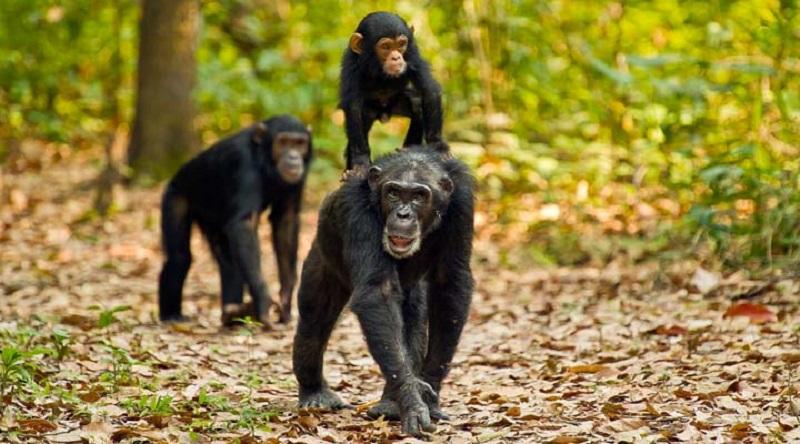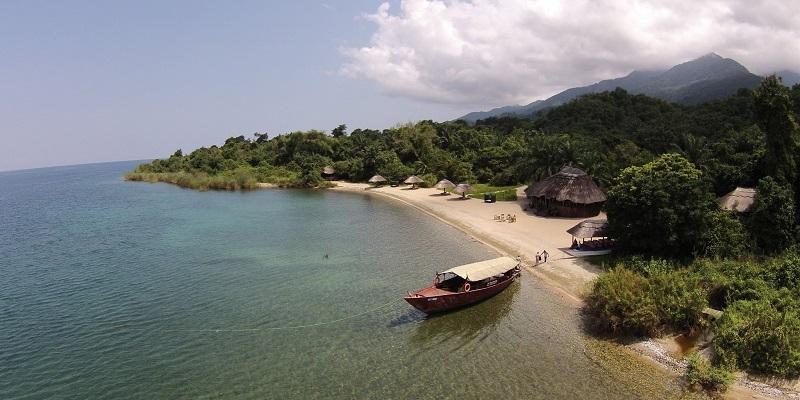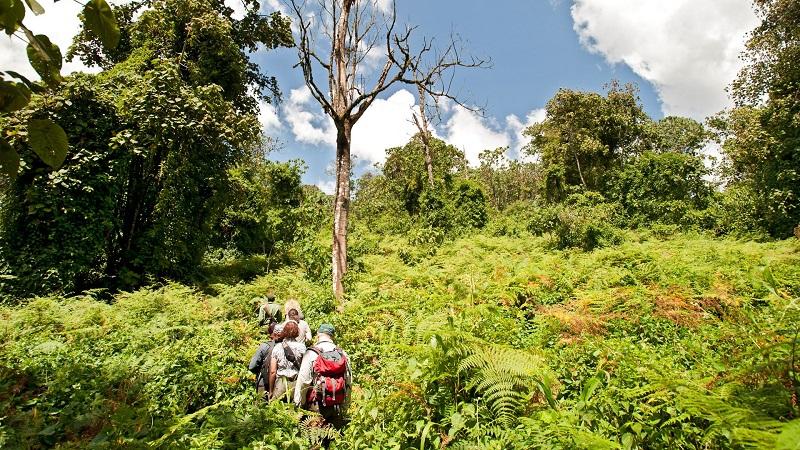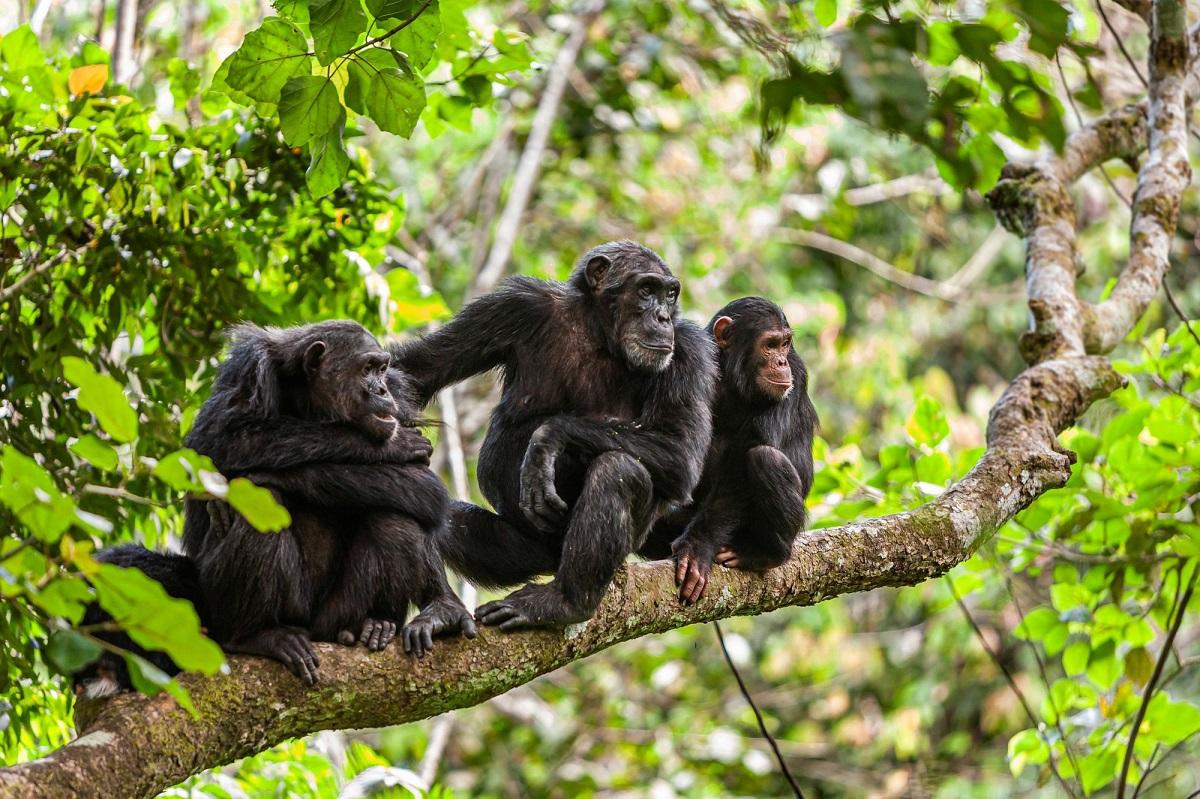Mahale Mountains National Park is located on the western shores of Lake Tanganyika in Tanzania. It is a remote and breathtaking destination known for its dramatic scenery and exceptional chimpanzee trekking opportunities. Covering an area of about 1,613 square kilometers, this park is one of the most unspoiled wilderness areas in Africa.
The towering Mahale Mountains provide a stunning backdrop to the crystal-clear waters of the lake. The park is accessible only by boat or small aircraft, adding to its allure as an exclusive and secluded safari destination.
Mahale Mountains National Park is home to some of the largest chimpanzee populations in the world, alongside diverse wildlife and a rich ecosystem. Whether you’re exploring the forests, hiking the mountains, or swimming in the lake, Mahale offers a truly unique and off-the-beaten-path experience for nature lovers and adventure seekers.
Please Download Our Mobile App here.
Overview of Mahale Mountains National Park
Mahale Mountains National Park is not just a sanctuary for wildlife but also a place of immense natural beauty. Its landscape is a combination of dense forests, rolling hills and steep mountains that cascade down to the shoreline of Lake Tanganyika. It is also the second deepest lake in the world.
The park was established in 1985, and it remains one of the few places in Africa where primates, especially chimpanzees, are the main attraction. Unlike other national parks, Mahale has no roads, making it a perfect destination for visitors looking to explore on foot. The park holds great cultural significance for the local Tongwe people, and many of its natural features, such as Mount Nkungwe, the highest peak in the park, are considered sacred.
Visitors to Mahale Mountains National Park are treated not only to the pristine wilderness but also to the opportunity to witness one of the closest relatives of humans, the chimpanzee, in their natural habitat.
Wildlife in Mahale Mountains National Park

Mahale Mountains National Park is best known for its chimpanzees. The park is home to around 1,000 chimpanzees, and the Mimikere (M Group) community of about 60 individuals is habituated for human observation. Chimpanzee trekking in Mahale is a thrilling experience, as visitors hike through dense forests in search of these intelligent primates.
Once located, you can observe their behavior up close, including grooming, playing and foraging, providing a rare glimpse into their social structures and daily lives. In addition to chimpanzees, Mahale is home to other primates, including red colobus monkeys, vervet monkeys and red-tailed monkeys. The park’s forests also shelter a variety of mammals, such as bushpigs, warthogs, bushbucks, and giant squirrels.
While large predators like lions and leopards are rare, they do inhabit the park, along with small carnivores like servals and genets. Birdlife is also abundant in Mahale, with over 350 recorded species. Visitors can spot colorful kingfishers, eagles, bee-eaters, and storks, especially along the shores of Lake Tanganyika. The park’s diverse ecosystem supports a wide range of animals and plants, making it a vital conservation area in Tanzania.
Best Time to Visit Mahale Mountains National Park
The best time to visit Mahale Mountains National Park is during the dry season, from July to October. This period offers the best conditions for chimpanzee trekking, as the trails are dry and the chimpanzees tend to stay in lower elevations, making them easier to locate. The clear skies and warm weather also make this an ideal time for swimming, snorkeling, and boating on Lake Tanganyika.
The wet season, from November to April, brings heavy rains that can make trekking more challenging. However, the wet season also brings lush vegetation, and birdwatchers will appreciate the influx of migratory species. Despite the rain, Mahale Mountains National Park remains open year-round, and each season offers its own unique experience.
Getting to Mahale Mountains National Park

Mahale Mountains National Park is a remote destination, and getting there is part of the adventure. Most visitors fly from Arusha or Dar es Salaam to Kigoma, a town located about 130 kilometers north of the park. From Kigoma, you can take a boat, which typically takes about 3-4 hours to reach Mahale, or arrange for a private boat transfer from the park’s lodges.
Alternatively, chartered flights can take you directly to the park’s airstrip. While more costly, this option provides breathtaking views of the Mahale Mountains and Lake Tanganyika from the air. The remoteness of the park makes it less crowded, allowing for a more intimate and immersive wildlife experience.
Other Activities in Mahale Mountains National Park
While chimpanzee trekking is the highlight of Mahale Mountains National Park, visitors can also enjoy a range of other activities. The crystal-clear waters of Lake Tanganyika are perfect for swimming, snorkeling and kayaking. The lake is teeming with over 250 species of cichlid fish, making it a popular spot for snorkeling enthusiasts.
Hiking is another popular activity, with trails leading through the dense forest to the summit of Mount Nkungwe, the highest point in the park at 2,462 meters above sea level. The trek to the summit takes about two days and offers spectacular views of the surrounding landscape and the lake below. Birdwatching is also a rewarding experience in Mahale, with the park’s diverse habitats supporting a wide variety of species.
Park Fees for Mahale Mountains National Park

As of 2024, the park fees for Mahale Mountains National Park are as follows:
- Foreign Visitors (Adults): $80 per person per day
- Foreign Visitors (Children): $40 per person per day
- Tanzanian Citizens (Adults): TZS 10,000 per person per day
- Tanzanian Citizens (Children): TZS 5,000 per person per day
These fees contribute to the conservation efforts within the park and help maintain the chimpanzee trekking program.
FAQs: Visiting Mahale Mountains National Park
Do I need a guide for chimpanzee trekking?
Yes, all visitors must be accompanied by an experienced guide during chimpanzee trekking. The guides are knowledgeable about the chimpanzees’ behavior and the best trekking routes.
Can I swim in Lake Tanganyika?
Yes, the clear waters of Lake Tanganyika are perfect for swimming. Many lodges offer access to private beaches, and visitors can also enjoy snorkeling and kayaking in the lake.
How long does a chimpanzee trek last?
Chimpanzee treks can last anywhere from a few hours to a full day, depending on how quickly the chimps are located. The trekking itself involves hiking through dense forest, so a moderate level of fitness is required.
Conclusion
Mahale Mountains National Park is an extraordinary destination that offers a blend of adventure, wildlife, and stunning natural beauty. Whether trekking to see chimpanzees or relaxing by the shores of Lake Tanganyika, visitors are sure to have a memorable and unique experience in one of Tanzania’s most remote and pristine parks.



